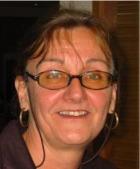
Altogether, in this sample of elite society, slightly less than one in every five leaders is a woman. However, there is great variation between the different sectors that are represented in the survey. In politics the sexes are almost evenly balanced. At the opposite end of the scale is the military: It is totally male dominated. Of leaders in business, 96 per cent are men. In the church, the figure is 94 per cent. In the police and the justice system, men make up 93 per cent. These sectors are the biggest villains. But also in the media, in administration, in research and higher education, in non-profit organisations and in entertainment it is men who dominate. The sector that comes best out in the survey is politics, with female representation at leadership level of almost 40 per cent. There are, however, big differences between the various parties. While the Socialist Left Party, the Norwegian Centre Party and the Norwegian Labour Party have nearly a 50/50 balance, the Progress party has a 10/90 imbalance in men’s favour.
Media reflect the elite
The media reflect the small degree to which women are represented in the elite.
– There is little doubt that public life, as reflected by the media, is fixated on the elite, writes Professor Hege Skjeie in the book “Norske makteliter” (Norwegian power elites), published in 2002. The sources that the media use are politicians, bureaucrats, organisation leaders, and experts of various kinds. This means that the picture of gender in the media is as equally traditional as the gender distribution at the top of the hierarchy. Skjeie points out that the average male dominance in the medias’ selection of source material is 80 per cent.
– Intentional or not, in their use of sources the media signal who and what is worth listening to, writes Skjeie.
Age and education
The average age of the members of the elite selected for the survey is 52. In this respect there is is not much difference between men and women. The elite do, however, set themselves apart from the population in general. The power elite are older. Leaders within the mass media are those who are youngest and most like the public in profile. Church leaders are the oldest.
The level of education of those in the elite survey is also much higher than in the general population. While 53 per cent in the Power and Democracy study’s selection have a higher educational degree, the comparative figure for the general population in the same age group is 5 per cent. The sectors which have the fewest graduates from higher education among their leaders are media and politics. The male elite are better educated than the female elite. While 55 per cent of the men have a higher education degree only 41 per cent of the women do. Around 90 per cent of the elite are either married or in cohabiting partnerships. The partners of the male elite have lower educational qualifications and lower ranking jobs than the partners of the female elite. The difference is particularly great at the highest levels of the universities. While only 33 per cent of the men have a partner who is equally highly educated as they are the respective figure for the women is 74 per cent.
The majority are from the upper-middle and upper classes
In elite circles, the political right is better supported than it is in the population at large. Norwegian leaders are, however, more left-leaning than their Swedish colleagues. And female leaders are far more left-leaning than their male counterparts. The Norwegian Conservative Party is the party most supported by the elite while the Progress party has practically no support at all within this group.
The elite are not representative of the class backgrounds of the population. The upper class and the upper-middle class have a representation in the power elite of four times their representation in the general population. The working class is under represented. One important reason for the relationship between class and elite position is that one’s level of educational achievement tends to be higher the more privileged class background one comes from – and education has a big influence on one’s chances of gaining an elite position. But, as it is pointed out in the book “Norske makteliter” (Norwegian power elites), it is also true that class background is influential even once educational achievement has been accounted for. Nevertheless, this is not to imply that there is any indication of a closed shop situation, because all class backgrounds are represented in Norwegian elite milieus, in the year 2000. Some sectors are however a little more closed than others – in particular, the police and justice sector, and in trade and industry. The representation of the sexes in these sectors is very one-sided.
Translated by Matthew Whiting KILDEN